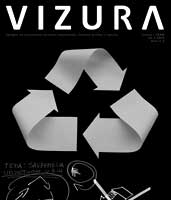Buđenje kompjuterske umetnosti
AWAKENING OF COMPUTER ART
Author(s): Lidija MerenikSubject(s): Fine Arts / Performing Arts
Published by: Gradska galerija Collegium artisticum
Summary/Abstract: In view of the exhibition Bit international - [New] Tendencies - Computers and visual Research, held in 2007 in the Neue Galerie am Landesmuseum Joanneum in Graz, this text touches upon the artistic, ideological and socio-political context of a Zagreb-based international movement known as New Tendencies, i.e. that began in the era of Socialist Federal Republic of Yugoslavia. Although the text explains the genesis of the New Tendencies from 1961 onwards, it mostly underscores the phase dedicated to the new explorations in the domain of early computer art. In that context, a significant turning point in the activities of NT occurred at the symposium and exhibition NT 4 (1968/69) which was entitled Computers and visual exploration, when the NT defined the meaning, the ideology and the purpose of an experiment they had always strived for. The period preceding the NT 5 (1973) was almost solely focused on the achievements of computer art. After the Tendencies 4 in 1968, and following the first international colloquium of the New Tendencies until 1973, when Tendencies 5 exhibition was held, this vision was focused not only on the anticipation, but also on the first steps of the computer era in art, the dialogue between art and the “machine” that was capable of creative activity (in 1968, in parallel with the Cybernetic Serendipity held at ICA, London). This same year was marked by the establishment of the Bit International magazine, which advocated a “symbiosis of art and machine (computer)” and was the publication dedicated to the “theory of information, precise aesthetics, design, mass media, visual communication and related disciplines”. NT has been considered here as an ideological model that is diametrically opposite to the forms of highly aestheticised modernism (“socialist modernism”) that were cultivated in Tito’s Yugoslavia from the period of the historical break-up with soc-realism and in particular in the 1950s and 1960s. The conclusion that was reached in this paper is that the Nev Tendencies have acted consistently and progressively along the lines of continuity, both with the early, between-the-two-world-wars avant-garde movements in the Yugoslav cultural space, e.g. Zenit, as well as with the early idiom of radical abstraction that emerged in the Zagreb-based circle developed around the group XAT ‘51. The New tendencies are also an unavoidable link with the neo-avant-garde tendencies of the Yugoslav art scene personified in the new artistic practice and conceptual art.
Journal: VIZURA - Časopis za savremene vizualne umjetnosti, likovnu kritiku i teoriju
- Issue Year: 2008
- Issue No: 01+02
- Page Range: 94-105
- Page Count: 12
- Language: Bosnian

